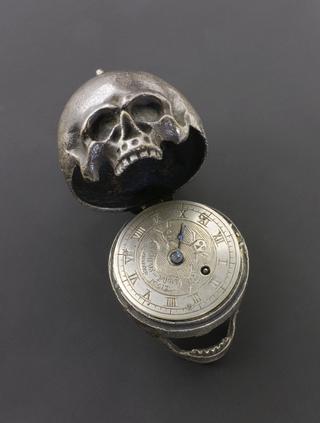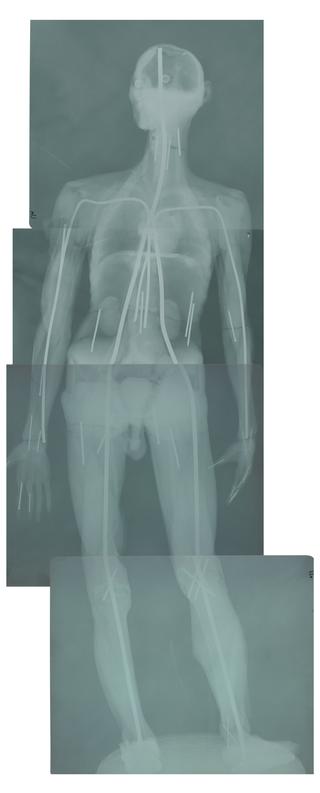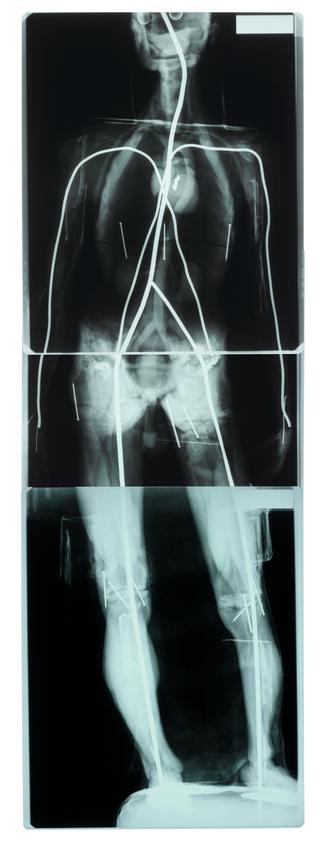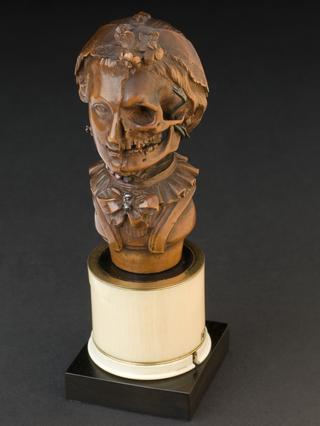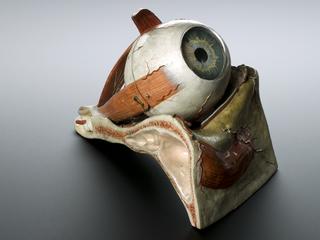


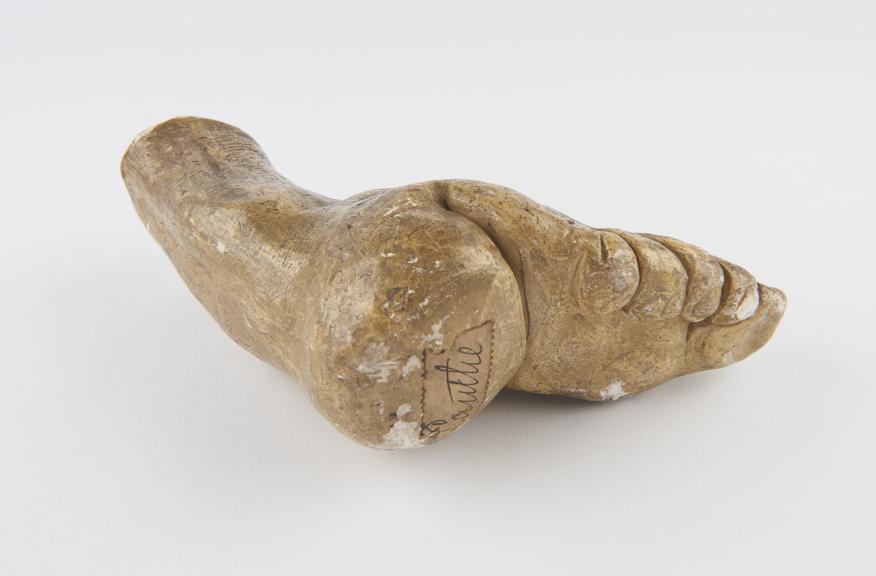

Plaster model of right foot deformed by Chinese practice of foot-binding, from Hong Kong, property of Sir James Cantlie, by Dr. Rabe, Hong Kong, China, 1912
Foot-binding was a traditional practice that originated among high society women in China, possibly up to 1000 years ago. It involved ‘moulding’ the feet of a young girl, usually aged between three and eleven. This artificially restricted foot growth and was achieved by breaking the bones of the feet and manipulating the toes under the arch. The feet were then bound and repeatedly squeezed in to tighter and smaller bindings and shoes over time. The painful practice was associated with beauty, status and marriage eligibility. It eventually spread through all social classes. Foot-binding was outlawed in 1912, but it continued in more rural areas for years afterwards.
This plaster model of a right foot shows the damage caused by foot-binding. It was made in Hong Kong by a Dr Rabe. The model belonged to Scottish physician, medical administrator and surgeon Sir James Cantlie (1851-1926). It is shown with a left foot and a tiny pair of embroidered silk shoes (A51770).
Details
- Category:
- Anatomy & Pathology
- Collection:
- Sir Henry Wellcome's Museum Collection
- Object Number:
- A56883
- Measurements:
-
overall: 155 mm x 132 mm x 63 mm, .425 kg
- type:
- model - representation
- credit:
- Cantlie, N.
